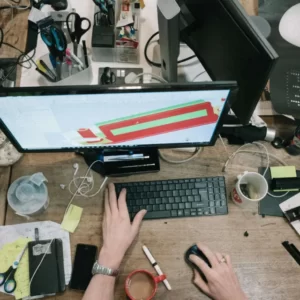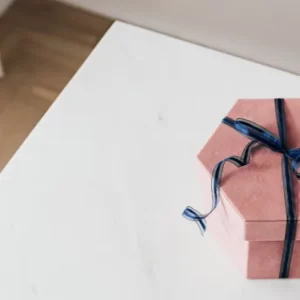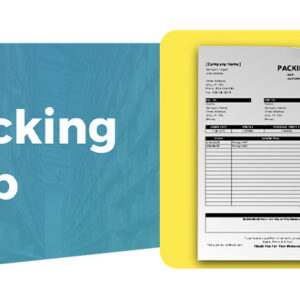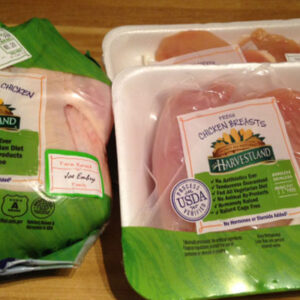Interested in the blister pack? You are in the right place.
What is a blister pack? Blister packs are sight packs (or retail packs). The blister pack machine secures the package after the blister is typically heat-sealed to the lining material inside.
It is possible to take your prescribed medication in a secure and practical manner by using blister packs. Keep reading and learn its types, benefits, and more!
Table of Contents
What is Blister Packaging?
A thermoformed plastic cavity and a flexible lid make up pre-formed packaging materials known as blister packaging or blister packs. When a product is packaged in this way, it is put into deep pockets or cavities that resemble blisters.
The flat portion of the plastic cavity enclosing the product is paired with a backing material, or lidding, and a heat seal joins the two structures. Depending on the use, blister packaging comes in a variety of forms.
The most popular use of blister packs is for packaging pharmaceutical products such as pills, tablets, capsules, and lozenges. They are also used for packaging consumer goods like foods, electronics, toys, and tools due to their low price, affordable raw materials, and quick production rates. The types and benefits of using blister packaging are listed below.
Read More:
Types of Blister Packaging
The blister, cavity, box, and shape are the defining characteristics of the various blister packaging designs, and they vary depending on the product being packaged. The different substrates, materials, and heating sealing techniques further differentiate the types of packaged goods, as well as their sizes and shapes, defining the packaging method.
The four different packaging techniques are broken down into plastic and paper, plastic and plastic, aluminum foil and plastic, and aluminum foil and aluminum foil. Blister packaging was initially intended to be used as packaging to safely seal medications inside of tamper-evident containers. Blister packaging has evolved into a diverse range of industries and brought a cutting-edge approach to product display and safety since its beginnings as medical packaging in the middle of the 20th century and the rapid advancement of technology.
Clamshell Packaging
Clamshell packaging has an external shell and two parts connected on one side that are of comparable sizes. Its opening appearance, which is similar to that of huge clams in the ocean, gave rise to its name. Clamshell packaging is produced using a variety of plastics and comes in a variety of sizes. They serve as an alternative to boxes in the fast food industry.
Plastic and Paper Packaging
Blister cards, also referred to as face seals, are a popular kind of blister packaging made of plastic and paper. The plastic material is heated, shaped to the product’s specifications, and then heat-sealed to a piece of cardboard.
Trapped Blister Packaging
The use of clamshell and face seal blister packaging is being phased out in favor of trapped blister packaging. Similar to paper and plastic blister packaging, it is a process. The trapped blister packaging method places the product, enclosed in plastic, between two pieces of cardboard, as opposed to the plastic and paper method, which attaches a sheet of plastic in the shape of the product to a piece of cardboard.
Due to its low cost and use of environmentally friendly materials, the trapped blister packaging method is appealing. It is also a very secure packaging technique that cannot be opened easily. Blister packaging that has been trapped inside has become very popular, particularly in club store merchandise.
Aluminum Foil and Plastic Packaging
The structure of aluminum foil and plastic blister packaging is the same as that of plastic and paper blister packaging, where plastic is molded to the shape of the product. In aluminum foil and plastic blister packaging, the backing is a piece of aluminum foil instead of a piece of cardboard. It allows for easy accessibility while being a superior sealing material, making it the perfect packaging for pharmaceuticals.
Aluminum Foil and Aluminum Foil Packaging
Customers are unable to see the product because the packaging for aluminum foil and aluminum foil products is made of aluminum foil on both the front and back. The contents may occasionally be wrapped in sheets of plastic. Due to the high cost of production, aluminum foil and aluminum foil packaging are rarely used. Its development and use are intended for light-sensitive products that are shielded by aluminum foil.
Plastic and Plastic Packaging
Plastic packaging, including plastic blister packaging, is primarily clamshell-style packaging made of a single piece of molded plastic that creates a plastic casing that is difficult to open once it is sealed and closed. A piece of paper or cardboard is used as a backing in plastic and plastic blister packaging for informational and decorative purposes. Customers can fully inspect a product without opening a package thanks to plastic and plastic blister packaging.
Slide Blister Packaging
A piece of plastic cut to the shape of the product is attached to a piece of cardboard that completely encloses the product in slide blister packaging, a variation on paper and plastic blister packaging. The difference between slide blister packaging and other types is that the former has flanges that wrap around the sides of the cardboard, while the latter has an opening on one side that is unflanged, allowing the cardboard to slide in and out.
Advantages of Blister Packaging
Below are some advantages of blister packaging.
Individual Packaging
Birth control pills were the first notable item packaged in blister packs. Individual drug doses can be packaged affordably and conveniently in blister packs. Additionally, the packaging can be marked to help with efficient administration. By containing the contents in distinct cavities or pockets, individual packaging helps preserve the quality of the contents. Damage to any part of the packaging material will not affect the whole.

Maintaining Product Integrity
Depending on how sensitive a product is to moisture, oxygen, and light, lidding structures and forming films are developed. Barriers that prevent outside elements from penetrating the packaging components can be laminated onto them. Aluminum and other opaque materials block light, preventing UV rays from causing product deterioration.
Preventing Accidental Drug Misuse
Blisters and lidding systems may be created so that they are difficult to open without a manufacturer’s instructions. This stops people—including seniors and children—from taking the medication by accident. Child-resistant (CR) packaging has this style.
Visibility of Product
Since they let customers see the product through the packaging, blister packs, skin, and clamshell packaging are also utilized for retail products. The lid or backing material is additionally colored and created to draw potential customers.
Tamper Protection
Once opened, blister packs cannot be put back into their original state. Given that it is impossible to separate the lidding from the blister card without causing obvious damage, blister packaging has a built-in tamper-evident mechanism. This helps prevent package theft in both consumer goods like electronics and pharmaceuticals.
Minimal Movement Within Packaging
Blister packs can easily adapt to the shape of the product. A computer-aided machining program that manages a milling machine to make a mold can be fed the product’s shape. Only very slight gaps between the product and the packaging can be accommodated by the mold.
Components of Blister Packaging
Blister packaging primarily consists of four elements. These include the printing, lidding, heat-seal coating, and forming film. The main structural elements that make up almost all of the packaging’s weight are the forming film and lidding. A bond between the two structures is created by the heat seal layer. The labels, batch numbers, codes, and other crucial information are then printed on top.
Forming Film in Blister Packaging
The cavity is made by the forming film. The selection of the forming film is based on its qualities, grade, and thickness. To account for minute deformations that might potentially harm the product, the cavity is shaped to match the product’s contour with a slight clearance. The filming film must be of the proper grade, thickness, and allow for convenient and simple opening in order to have the appropriate rigidity. The right grade and thickness of the film are necessary to allow for convenient and easy opening while also providing enough rigidity throughout the entire packaging. The product will be difficult to remove if it is overly rigid. The item might be harmed if it is too supple and flexible.
Backing Material Or Lidding
The lidding holds the item in the cavity. Lidding structures can be categorized as Push-Through-Packs (PTP), peelable lids, or a combination of the two. Similar to the packaging for most medicines, PTPs are made to be ripped or broken while being pressed into the pocket. As is the case with most packaging for consumer goods, lidding can also be made peelable without distorting the pocket. Push-peel lidding varieties are created specifically to be opened by following a set of steps. These exclusive lid varieties, also known as child-resistant blister lidding, are used on medications for seniors and kids.
Paper, PET, aluminum foil, or a combination of these materials are all frequently used as lidding materials. The temper, which can be either soft or hard, of aluminum foil is what makes it unique. Aluminum foil with a soft temper is more malleable and ideal for storing hard goods like tablets and lozenges. Due to their malleability, they can be bent before breaking. This property allows for the use of soft aluminum lids in child-resistant blister packaging, reducing the chance of kids accidentally pushing tablets out of the packaging. 1.0 mil (or 1/1000th of an inch) is the typical thickness of the soft aluminum foil used in blister lidding.
Aluminum foils that have been hard-tempered are easily tearable with enough force but do not allow for any elongation. They are employed for lids that can be removed by pushing them through or peeling them off. The foil thickness is about 0.8 mils for a single layer, hard aluminum lid structure. Push-through packs employ a structure of this kind.
In order to create child-resistant packages that can be peeled off, pushed through, or both, hard aluminum foils can be combined with paper and PET. A typical design calls for the paper and PET layers to be removed from the aluminum first. The aluminum foil is torn as a result of pushing the tablet through.
Heat-seal Coating
The lidding and the plastic blister pack are joined by heat-seal coatings. Using roll coaters, knives, gravure, brushes, or sprays, they are molten or liquid polymer resins that are applied to the surface of the lidding material. To create an airtight sealing, the proper amount must be used. The resin is applied, and then the foil’s surface is given time to dry out. When the bonded foil-seal coat film is used for packaging, this resin will be reactivated.
Low-temperature activation, a low coefficient of friction, high gloss, and high transparency are typical properties of heat-seal coating resins used for blister packaging. The FDA must approve the polymer resin for direct food contact compliance for pharmaceutical and food packaging. Water-based and solvent-based heat seal coatings are the two most common types. Examples include acrylic, ethylene acrylic acid (EAA), and polyvinylidene chloride (PVDC). Co-extruded polyolefin films and extrusion-coated polyolefin films are additional types. Low-density polyethylene (LDPE), linear low-density polyethylene (LLDPE), and ethylene-vinyl acetate (EVA) are examples of these film types.
Prints in Blister Packaging
To provide information about the product and draw customers’ attention, prints are added to the lidding structure. They are typically printed on and then applied. These must withstand temperatures of about 572 degrees Fahrenheit (300 degrees Celsius) during the heat-sealing process because they are applied prior to it.
Read More: What Do the Colored Dots Mean on Food Packaging?
FAQs
What is a Blister Pack Medication?
A blister pack is a form of tamper-evident packaging where an individual pushes individually sealed tablets through the foil in order to take the medication.
What is the Purpose of a Blister Pack?
Blister packs are used to provide a safe and convenient way to take your prescribed medication. Each daily-required medication is kept separate from the others in its own tiny pack. Knowing how much medication to take when makes it simple to do so.
Do Pills Need to Stay in Blister Packs?
It’s only safe to remove pills from the blister pack and put them into another container if you’re taking a certain kind of birth control pill called monophasic pills. With monophasic pills, every active pill in the pack contains the exact same hormone combination and is the same.
Conclusion
A thermoformed plastic cavity and a malleable lid make up blister packaging, also known as blister packs. The product is positioned in deep pockets or cavities that resemble blisters in this style of packaging.
The following advantages of blister packaging are provided: individual packaging, maintaining product integrity, tamper protection, preventing unintentional drug misuse, visibility, and permitting little movement within the packaging.
Read Next:





